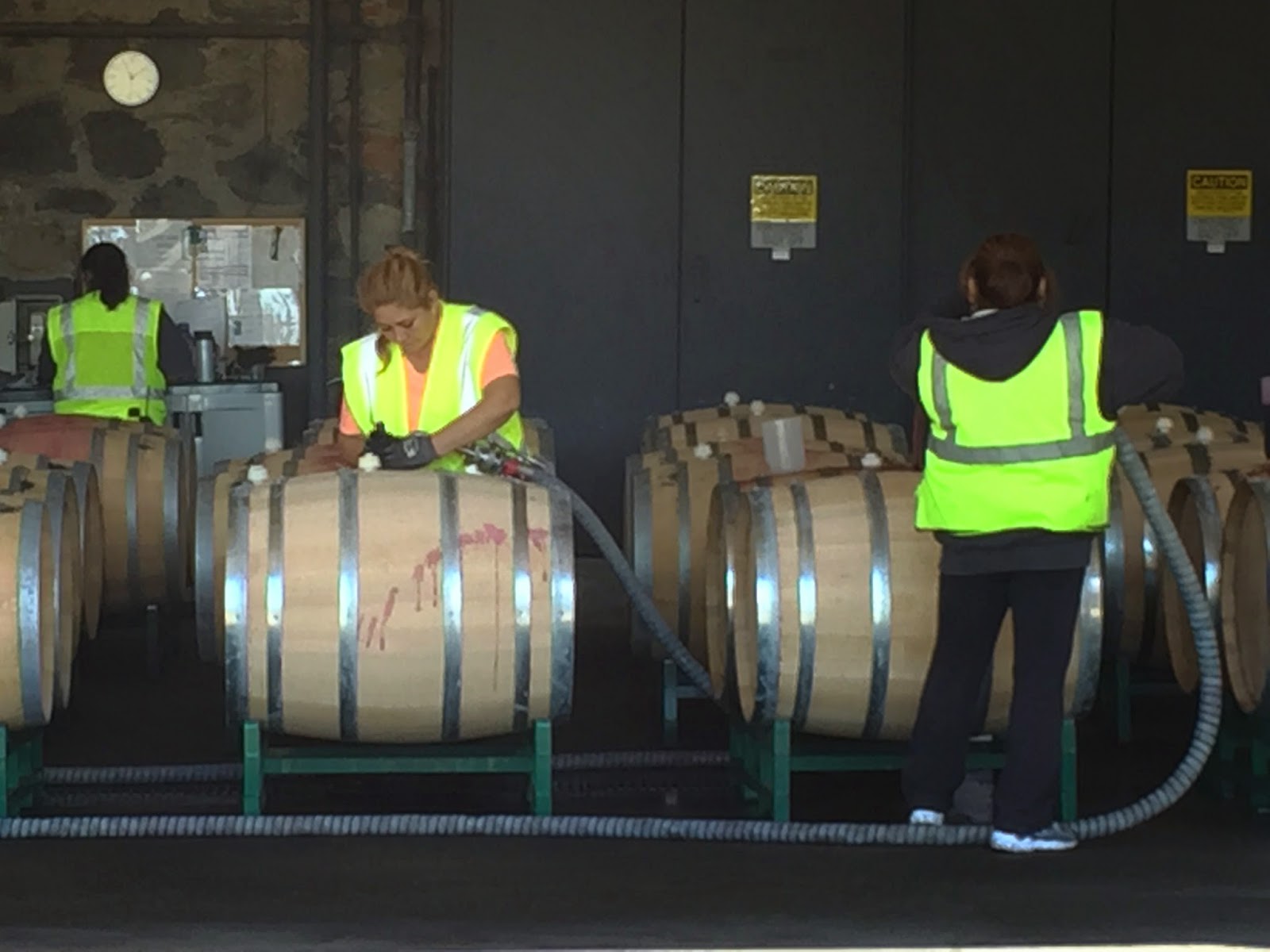Some wineries also offer tours. Simi Winery was one of those.
Simi is an older winery, having begun in the late 1800's by two Italian brothers. The first brother came to America to seek his fortune in gold. That was hard work! He opted to sell produce to restaurants, and began making some wine in the cellar of his San Francisco shop. His wine was very popular so his brother joined him. They purchased land, built the winery and began production.
Although the process of wine making hasn't changed over the years, the equipment and mechanization has afforded wineries with the opportunity to produce more, meeting the demands of a growing market (according to the Wine Institute).
A grape press of the late 1800's
Follow me on our tour:
The grapes come into the winery in "gondolas" on large trucks. Some use huge plastic bins. Others are stainless steel bins on hinges.
Wineries use their own grapes and often contract with other vineyards to get different varietals.
The wine label often tells the tale. If the label is "Estate Bottled" all of the grapes and the wine making process must be on the winery's property. If the label names a region, or a county, then the grapes may have come from outside the winery.
Once the truck arrives at the winery, a hoist picks up one side of the gondola dumping all of the grapes into a large hopper.
Large screw-shaped mechanisms act like a conveyor to move the grapes through different processes.
The first stop (except those grapes designated for Chardonnay at Simi) is the "distemper".
The destemmer has a paddle that mashes the grapes against a screen. This is a distemmer we could see at Deerfield winery.
The hard stems get caught by the screen and the grapes and skin fall through where they are carried into a large vat for initial fermentation. The stems are carried by another conveyor and dumped into a truck. This winery uses the stems to enrich their soil and help break down the clay in the soil.
Fermentation initially takes place in stainless steel vats. The temperature is controlled and the sugar levels are monitored.
At some point, the finer wines are transferred to small oak barrels for aging. Most wine barrels are made in Europe. It is felt that European Oak imbues a better flavor. The barrels are reused (unlike those used for fine whiskey). When they are emptied, they are cleaned with water and a Dixie Cup is put in the bung hole to keep dirt and insects out.
Another interesting aspect of this process is that this winery uses a gravity feed. The initial crushing and storage is higher up a hill than this area, so once the wine has gone through processes in the larger tanks, it moves without the use of pumps to this area.
At the Simi winery the barrels are stenciled with numbers and letters telling what year the barrel was acquired and what company built it. The stencil is green if they use the barrel for white wines and red for red wines. I found it interesting to learn that barrels used for white wine could later be used for red, but not the other way around. The winery now uses bar code labels with all of the information about the contents encoded.
Barrels are stored for different periods of time in temperature and humidity controlled areas. Here are stacks of barrels in the huge storage area at Simi. The walls of the building are 18" thick, keeping the area naturally cool.
The Deerfield Winery created their own caves. Barrels are stacked through different passages that go under the hillside.
After the desired aging time the contents are bottled and labeled. Some wines are aged further in the bottles, others are ready to sell.... and for the visitor, it's time for a stop at the tasting room!
Our group samples wine at Sutter Home Winery
Some wineries charge for tasting.
A few, like Sutter, offer a few samples for free.
It seems that most wineries have a tasting "menu".
Most of the wineries we visited encourage you to become a member, meaning you will commit to buying a certain number of bottles of wine through the year, receiving a discount for your purchases. Some memberships allow perks at other 'sister' wineries as well.
All wineries would love to have you walk out with their product.
We did our share!























There's quite a few wineries in Santa Ynez (did ya ever see that Sideways movie?)
ReplyDeleteI missed that movie! Since we are heading toward the Santa Ynez region, maybe I'll have more opportunities to wine!
DeleteLet me know your email so I can communicate with you directly about possibly getting together.
Looks like a lot of fun.
ReplyDelete